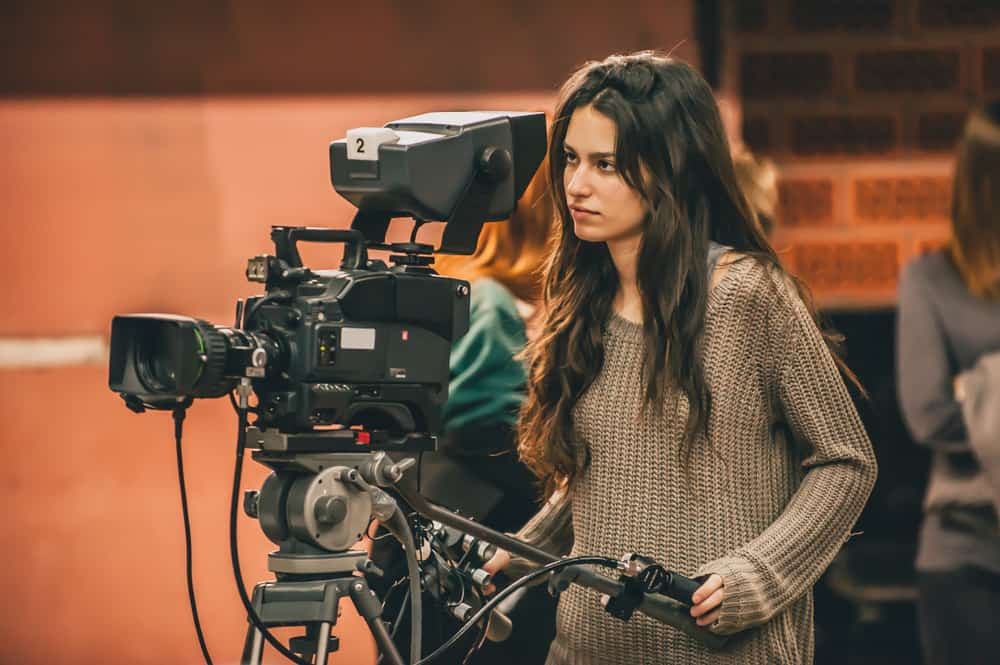Difference Between Screenwriting and Scriptwriting
Ever dreamt of seeing your words light up the silver screen? Hold your applause, aspiring auteurs. Because we’re about to unveil the truth behind “screenwriter” and “scriptwriter” – are they two sides of the same coin, or fierce rivals in the battle for storytelling supremacy?
We’ll explore the unique characteristics of each, uncovering what sets them apart and what common ground they share. Whether you’re a budding writer eager to find your niche or simply intrigued by the inner workings of film production, this exploration promises to be insightful and empowering.
Screenwriting vs Scriptwriting
Screenwriting and scriptwriting are terms often used interchangeably, but they can have distinct connotations depending on the context. Here’s a summary highlighting the differences:
What is Screenwriting?
Screenwriting paints with pixels and sound effects, crafting stories specifically for the silver screen. It’s the art of weaving words into captivating visuals, where the screenwriter is the architect, shaping the narrative and breathing life into characters. From core ideas to intricate plots, they translate their vision into scripts that ignite imaginations, making them the unseen hand behind the magic on screen.
Skills Required for Screenwriting
- Mastering Visual Storytelling:
Do you want free career counseling?
Ignite Your Ambitions- Seize the Opportunity for a Free Career Counseling Session.
- 30+ Years in Education
- 250+ Faculties
- 30K+ Alumni Network
- 10th in World Ranking
- 1000+ Celebrity
- 120+ Countries Students Enrolled
Move beyond mere words by transforming scenes into vibrant imagery, utilizing the “show, don’t tell” principle to create vivid mental pictures for readers.
- Crafting Dialogue Depth:
Develop natural-sounding dialogue that not only reveals character traits but also propels the story forward and stirs emotional connections. Keep in mind that characters converse authentically rather than delivering monologues.
- Understanding Structural Elements:
Decipher the fundamental elements of screenplay structure, including the three-act framework, character arcs, and plot points. Strategically employ these tools to construct tension, surprise, and a gratifying resolution.
- Immersing in Genres:
Immerse yourself deeply in your chosen genre. Study successful films within the genre, grasp its conventions, and uncover your distinctive voice within its established boundaries.
- Mastering Format Guidelines:
Gain fluency in screenplay formatting, utilizing industry-standard software like Final Draft to ensure your script adheres to professional norms.
- Fostering Collaboration:
Embrace collaboration by actively seeking and incorporating feedback. Recognize the value of input from directors, producers, and readers in enhancing the quality of your work.
Do you want free career counseling?
Ignite Your Ambitions- Seize the Opportunity for a Free Career Counseling Session.- Cultivating Cinematic Curiosity:
Explore films across various eras and genres to broaden your cinematic horizon. Analyze successful works, learn from accomplished filmmakers, and let your passion for cinema ignite your creativity.

Roles and responsibilities as a screenwriter
- Craft original stories or adapt existing material into screenplays
- Build engaging character arcs and develop personalities/motivations
- Write realistic dialogue that reveals emotions and advances the story
- Structure the narrative for pacing and audience engagement
- Collaborate with directors and producers throughout the process
The process involved in Screenwriting
- Ideation:
Screenwriting begins with sparking ideas, characters, and themes that fuel imagination and resonate with the intended audience.
- Genre Identification:
Writers identify the genre best suited to their story, shaping its stylistic and narrative framework accordingly.
- Outlining:
Building a roadmap for the story, outlining key plot points, character arcs, and narrative structure to ensure a well-paced journey.
- Drafting:
Translating the outline into a fully realized script, where scenes unfold, dialogue crackles, and characters come to life on the page.
- Character Development:
Focusing on developing clear and engaging characters with distinct personalities, motivations, and backstories.
- Revision and Feedback:
Actively seeking feedback from peers, mentors, and professionals to refine dialogue, strengthen plot points, and enhance emotional resonance.
- Iterative Drafting:
Revising multiple drafts to inch closer to the writer’s vision, incorporating feedback and fine-tuning elements of the story.
- Final Draft:
Emerging with a polished script, ready to be pitched to producers and production companies as the writer’s calling card for bringing the story to the screen.
What is Scriptwriting?
Scriptwriting goes beyond mere storytelling. It’s the meticulous translation of a screenwriter’s vision into a technical blueprint, guiding the visual aspects of film and television. From camera angles to scene transitions, scriptwriters meticulously detail the visual language that breathes life into the narrative, serving as the essential roadmap for directors and crew to bring the story to the screen.
Read Also: Who is a Film Production Manager | Roles, Scopes, Salary?
Skills required for Scriptwriting
- Technical Mastery:
Deep understanding of camera angles, shot types, transitions, and visual cues to effectively translate the story into actionable instructions for the production team.
- Format Flexibility:
Adapting scripting formats beyond screenplays to fit diverse mediums like video games, radio dramas, or interactive narratives.
- Non-Linear Storytelling:
Crafting branching dialogue trees and crafting intricate narratives for non-linear mediums like video games, where player choices alter the story.
- Character Detailing:
Writing in-depth bios and backstories for non-playable characters (NPCs) in video games, enriching the world and player immersion beyond the main characters.
- Technical Communication:
Collaborating effectively with programmers, sound designers, and other technical teams to ensure the script seamlessly integrates with the game or interactive experience.
Roles & responsibilities as a screenwriter.
- Distill existing works into scripts for diverse mediums.
- Write engaging dialogue and action sequences.
- Partner with directors to align script with their vision, and assist actors with character nuances.
- Research and incorporate accurate details for authenticity.
The process involved in scriptwriting
- Medium Selection:
Scriptwriters begin by choosing from various mediums such as theater, radio, or video games, each offering unique challenges and opportunities.
Read Also: List of Best Screenwriting Software in 2024
- Research:
Delving into the chosen medium’s nuances, format guidelines, and storytelling techniques is essential before writing begins.
- Writing Stage:
Craftsmanship comes into play as scriptwriters breathe life into dialogue, create compelling characters, and weave stories within the chosen format’s constraints.
- Medium-specific Approach:
Adapting writing techniques to suit the medium’s requirements, whether crafting character bios for video game NPCs or ensuring seamless stage directions in theatrical scripts.
- Collaboration:
Actively seeking feedback from peers and professionals within the chosen field to refine the script, aligning it with the medium’s artistic vision and audience expectations.
- Final Draft:
After incorporating feedback and ensuring technical accuracy, the polished script is ready for its next stage, whether it’s being performed on stage, broadcasted as a radio drama, or integrated into a video game narrative.
Read Also: Lights, Camera, AI: How AI is Transforming Filmmaking
Key difference between screenwriting & scriptwriting
While both professions breathe life into stories for the screen, screenwriting and scriptwriting subtly diverge in their focus, format, and collaborative nature.
Format:
Screenplays follow strict industry standards like Final Draft, ensuring consistency and professionalism. Scriptwriting enjoys more flexibility, adapting its format to diverse mediums like video games or radio dramas.
Visual Storytelling:
Screenwriting prioritizes visual impact, incorporating camera angles, scene transitions, and other details. Scriptwriting focuses more on dialogue and narrative structure, leaving visual interpretation open.
Collaboration:
Screenwriting thrives on collaboration with directors, cinematographers, and others to actualize the screenplay. Scriptwriting may involve collaboration but often allows for more individual creative expression.
Medium Specificity:
Screenwriting is laser-focused on crafting scripts specifically for film and television. Scriptwriting embraces a wider range of mediums, from video games to interactive narratives.
Read Also: A Beginner’s Guide to Post-Production for Filmmakers
Common Ground for Screenwriting vs Scriptwriting
While screenwriting and scriptwriting differ in their nuances, several crucial commonalities bind them.
- Narrative Architecture:
Both build upon a strong narrative foundation, ensuring a clear journey with a beginning, middle, and satisfying conclusion. They masterfully weave conflict, tension, and resolution, transporting viewers through a captivating arc.
- Storytelling Essentials:
Whether crafting scenes for the screen or shaping narratives for interactive experiences, both disciplines share the core principles of plot development, character arcs, and structure. They are the architects of compelling tales, regardless of the final medium.
- The Power of Dialogue:
Both screenwriters and scriptwriters wield the magic of language, crafting engaging and authentic dialogue that reveals character personalities, drives the plot forward, and evokes emotions. Dialogue is the lifeblood of their stories.
- Emotional Resonance:
Beyond words or visuals, both aim to stir emotions within the audience. They have the power to captivate, entertain, inspire, and leave a lasting impact.
Read Also: Method vs. Meisner: Find Your Perfect Acting Technique
- Character Craftsmanship:
From the silver screen to interactive worlds, both disciplines breathe life into well-rounded and relatable characters. These characters become the driving force of the story, engaging the audience and making them care.
Conclusion
While both craft compelling narratives, screenwriters focus their magic on cinematic scripts, wielding the iconic “screenplay” format. Scriptwriters, however, possess broader horizons, shaping stories across diverse mediums from film to video games. Remember, the script itself serves as the blueprint, igniting the creative process. Not all scripts graduate to “screenplay” status, but every captivating screenplay begins its journey as a script, waiting to be unleashed. So, grab your pen, embrace the power of scripting, and tell your story!

AAFT has been providing the world with limitless creativity and expression since 1993! Through a dynamic and industry-driven curriculum, AAFT provides engaging and captivating articles to persuasive blogs and empowers its readers to explore diverse avenues of creative media education-related content.







